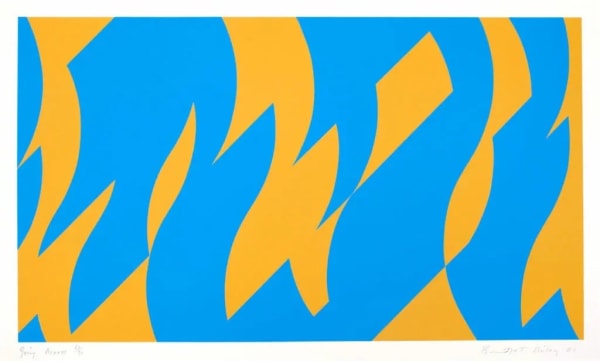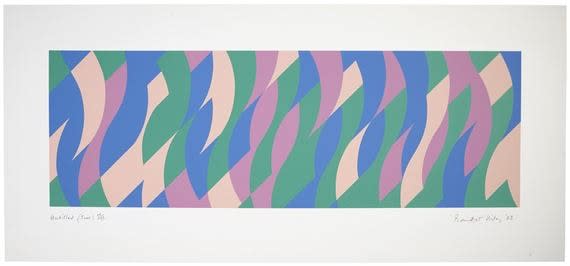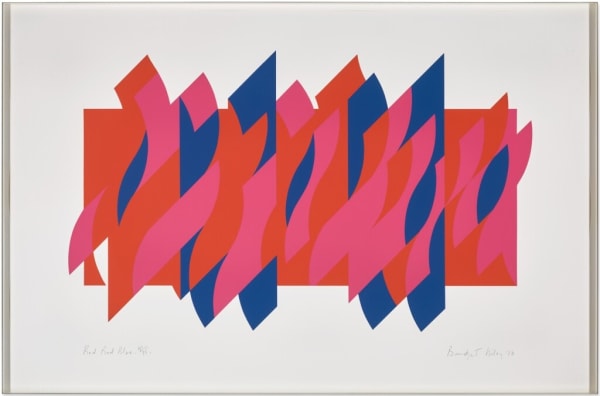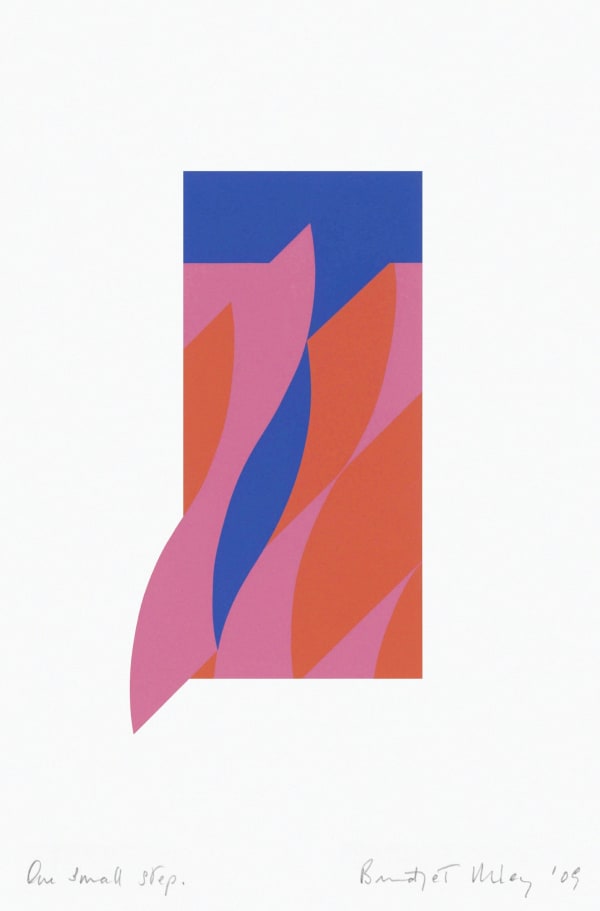-
Bridget Riley is one of the most important artists of the 20th century and is widely known for her pioneering print and paintings that explore the interplay between color and geometric forms of circles, lines, squares, and curves. Widely regarded as the pioneer of the British Op-Art movement, Riley’s art and influence have cemented her as one of the 20th Century greats.Explore Bridget Riley art for sale at Guy Hepner, Riley dealers since 2002.
-
Explore Latest Bridget Riley Art For Sale: Prints & Originals
-
 Bridget RileyJune, 1992
Bridget RileyJune, 1992 -
 Bridget RileyAbout Lilac, 2007
Bridget RileyAbout Lilac, 2007 -
 Bridget RileyLarge Fragment 2, 2009
Bridget RileyLarge Fragment 2, 2009 -
 Bridget RileyLarge Fragment, 2006
Bridget RileyLarge Fragment, 2006 -
 Bridget RileyMagenta And Green, 2002
Bridget RileyMagenta And Green, 2002 -
 Bridget RileyMagenta And Yellow, 2002
Bridget RileyMagenta And Yellow, 2002 -
 Bridget RileyIntervals Set; Blue/Green, Orange/Blue, Green/Purple, 2021
Bridget RileyIntervals Set; Blue/Green, Orange/Blue, Green/Purple, 2021 -
 Bridget RileySilvered 2, 1981
Bridget RileySilvered 2, 1981
-
-
SeriesOverview
"Focusing isn’t just an optical activity; it is also a mental one."
- Bridget Riley
Known for her expressive use of color, geo-metric shapes, Bridget Riley is one of the most influential artists of the 20th century. Across Bridget Riley prints and original paintings, intricate hypnoticate patterns unfold in front of our very eyes through her vibrant fields of visual tension and movement.
Bridget Riley is considered to be a pioneer of the Op-Art (short for Optical Art) movement of the 1950s and 1960s, and her ground-breaking style explored the relationship between color, shape, and pattern to create visual phenomena that seemed to vibrate or shift before the viewer’s eyes. In doing so, she was able to tap into a universal human experience—how we perceive the world visually—while also engaging with the scientific fields of psychology and perception theory.
Beyond her pivotal role in Op Art, Bridget Riley’s artworks are considered significant in the broader context of contemporary art. Her practice questions the boundaries between art and science, aesthetics and illusion, abstraction and figuration. Through her art, she challenges the viewer's perception and understanding of reality.
Bridget Riley prints are a delicious and enticing combination of color and form- layered with meaning and expression. At Guy Hepner, we have assisted collectors across the globe to buy Bridget Riley prints and enter into this revolutionary way of seeing. Whether new to collecting Bridget Riley prints, or an experienced collector, our knowledge and experienced team can help you.
For further information on our available Bridget Riley art for sale, contact info@guyhepner.com News
News-

The Most Expensive Bridget Riley Works
An Op-Art Masterclass December 15, 2025Bridget Riley (b. 1931) is one of the defining painters of postwar British abstraction and the single most important figure associated with Op Art’s rise...Read more -

Why Collect Riley?
A Guide to Collecting Bridget Riley Art February 24, 2025Collecting Bridget Riley When it comes to modern art, one name is almost synonymous with innovation and influence: Bridget Riley . Her work has captivated...Read more































